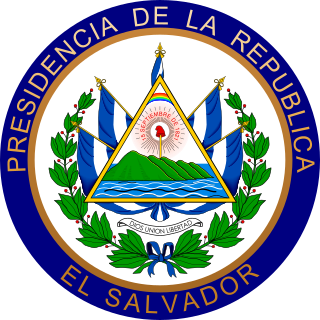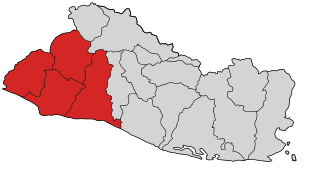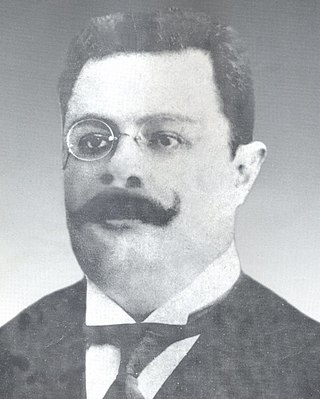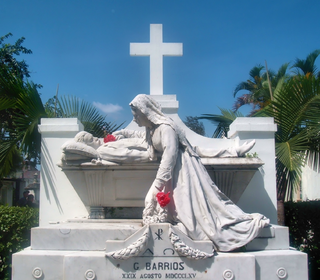| |||||
| Decades: | |||||
|---|---|---|---|---|---|
| See also: | |||||
The following lists events that happened in 1912 in El Salvador.
| |||||
| Decades: | |||||
|---|---|---|---|---|---|
| See also: | |||||
The following lists events that happened in 1912 in El Salvador.

The president of El Salvador, officially titled President of the Republic of El Salvador, is the head of state and head of government of El Salvador. He is also, by constitutional law, the commander-in-chief of the Armed Forces of El Salvador. The office was created in the Constitution of 1841. From 1821 until 1841, the head of state of El Salvador was styled simply as Head of State.

Fernando Figueroa was the President of El Salvador from 14 May to 18 June 1885 and again from 1 March 1907 to 1 March 1911. He also served twice as Minister of National Defense and Governor of San Vicente.

Doctor Manuel Enrique Araujo was a Salvadoran medical doctor and politician who served as the President of El Salvador from 1 March 1911 until his assassination on 9 February 1913.

Arturo Araujo Fajardo was the president of El Salvador from March 1, 1931, to December 2, 1931. He was overthrown in a military coup led by junior officers, and was forced to flee the country for Guatemala. An agricultural leader and engineer, Araujo had been elected in what is generally reckoned as the country's first honest presidential contest.

Casa Presidencial, or "Presidential House" in the Spanish language, is the President of El Salvador's official residence and his offices.

La Matanza refers to a communist-indigenous rebellion that took place in El Salvador between 22 and 25 January 1932. It was succeeded by large-scale government killings in western El Salvador, which resulted in the deaths of 10,000 to 40,000 people.

Monumento al Divino Salvador del Mundo is a monument located on Plaza El Salvador del Mundo in San Salvador City, El Salvador. It consists of a statue of Jesus Christ standing on top of a global sphere of planet Earth, placed on top of the tall four-sided concrete base pedestal. It is a landmark located in the country's capital San Salvador. It is a symbol that identifies and represents both El Salvador and Salvadorans throughout the world.

The Salvadoran military dictatorship was the period of time in Salvadoran history where the Salvadoran Armed Forces governed the country for almost 48 years from 2 December 1931 until 15 October 1979. The authoritarian military dictatorship limited political rights throughout the country and maintained its governance through rigged and fixed elections.

José María Peralta Lagos, was a Salvadoran writer, military engineer, and politician. He wrote under the pseudonym T.P. Mechín.

The Civic Directory was a military junta which governed El Salvador from 2 to 4 December 1931. The junta was composed of twelve members of the Armed Forces of El Salvador from the army, air force, and National Guard. The directory marked the beginning of the era of military dictatorships in El Salvador which lasted until October 1979 with the 1979 Salvadoran coup d'état and the establishment of the Revolutionary Government Junta, a joint civilian-military government which ruled until 1982.
Ateneo de El Salvador is a cultural, literary and artistic institution, founded in 1912 and whose headquarters are located in San Salvador. It has become a benchmark of national culture and prominent intellectuals from El Salvador have passed through it.
The following lists events that happened in 1907 in El Salvador.
The following lists events that happened in 1911 in El Salvador.
This is a list of events that happened in 1910 in El Salvador.
The following lists events that happened in 1913 in El Salvador.
Anarchism in El Salvador reached its peak during the labour movement of the 1920s, in which anarcho-syndicalists played a leading role. The movement was subsequently suppressed by the military dictatorship before experiencing a resurgence in the 21st century.

Prudencio Alfaro Menéndez was a Salvadoran politician who served as Vice President of El Salvador from 1895 until 1898. He later led a joint Honduran-Nicaraguan invasion of El Salvador in 1907.

The Cemetery of Distinguished Citizens is a cemetery located in San Salvador and together with the Cemetery of La Barmeja, it forms the Cemetery General in San Salvador. It is the burial place of prominent families of the capital of El Salvador and many outstanding figures from the history of this country.
Presidential elections were held in El Salvador in January 1911. Manuel Enrique Araujo was elected president through a popular election, receiving 182,964 votes. The election was rigged heavily in favor of Araujo, and as stated by White, "opponents were allowed to participate but not allowed to win".